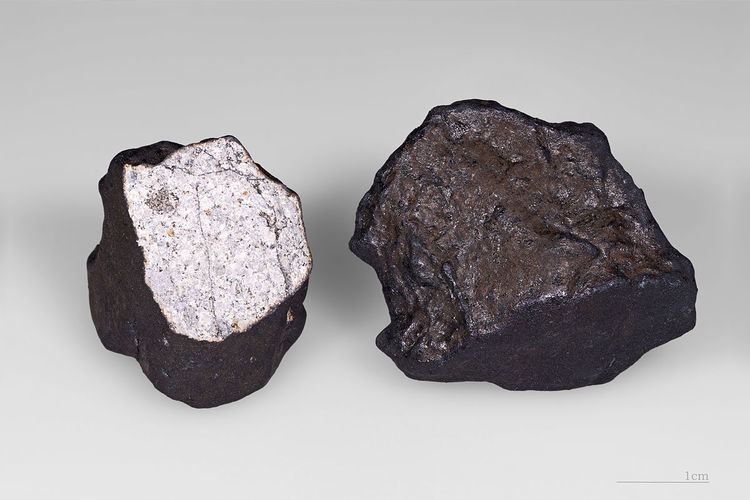Weathering grade W0 (pristine) | Shock stage S4 Observed fall Yes | |
 | ||
The Chelyabinsk meteorite (Russian: Челябинск or Челябинский метеорит) is the fragmented remains of the large Chelyabinsk meteor of 15 February 2013 which reached the ground after the meteor's passage through the atmosphere. The descent of the meteor, visible as a brilliant superbolide in the morning sky, caused a series of shock waves that shattered windows, damaged approximately 7,200 buildings and left 1,500 people injured. The resulting fragments were scattered over a wide area.
Contents
The largest fragment had a total mass of 654 kg (1,442 lb) and was raised from the bottom of Lake Chebarkul on 16 October 2013.
Naming
The meteor and meteorite are named after Chelyabinsk Oblast, over which the meteor exploded. An initial proposal was to name the meteorite after Lake Chebarkul, where one of its major fragments impacted and made a 6-metre-wide hole in the frozen lake surface.
Composition and classification
The meteorite has been classified as an LL5 ordinary chondrite. First estimates of its composition indicate about 10% of meteoric iron, as well as olivine and sulfides.
Asteroid
The impacting asteroid started to brighten up in the general direction of the Pegasus constellation, close to the East horizon where the Sun was starting to rise. The impactor belonged to the Apollo group of near-Earth asteroids.
The asteroid had an approximate size of 18 metres (59 ft) and a mass of about 9,100 tonnes (10,000 short tons) before it entered the denser parts of Earth's atmosphere and started to ablate. At an altitude of about 23.3 km (14.5 miles) the body exploded in an air burst. Meteorite fragments of the body landed on the ground.
Analysis of three fragments using optical microscopy, electron microscopy, Raman spectroscopy, and isotopic composition techniques used to date Solar System objects, showed the isotopic clocks in the asteroids (rubidium and strontium ratios, argon isotope ratios) appear to have partially or totally reset in past collisions. The isotopic clock resets may result from thermal effects changing isotopic ratios, and changes to cosmic radiation exposure. The asteroid appears to have had eight major collisions, around 4.53, 4.45, 3.73, 2.81, and 1.46 billion years ago, then at 852, 312, and 27 million years ago.
Meteorite
Scientists collected 53 samples nearby a 6-metre-wide hole in the ice of Lake Chebarkul, thought to be the result of a single meteorite fragment impact. The specimens are of various sizes, with the largest being 5 kg (11 lb), and initial laboratory analysis confirmed their meteoric origin.
In June 2013, Russian scientists reported that further investigation by magnetic imaging below the location of the ice hole in Lake Chebarkul has identified a 60-centimetre-large (2.0 ft) meteorite buried in the mud at the bottom of the lake. An operation to recover it from the lake began in September 10, 2013, and concluded on 16 October 2013 with the raising of the rock with an estimated mass of 654 kg (1,442 lb). It was examined by scientists and then handed over to the local authorities. It was then put on display at the Chelyabinsk State Museum of Local Lore, causing protests from the followers of the recently set-up 'Church of Chelyabinsk Meteorite'.
In the aftermath of the superbolide air burst, a large number of small meteorite fragments fell on areas west of Chelyabinsk, including Deputatskoye, generally at terminal velocity, about the speed of a piece of gravel dropped from a skyscraper. Local residents and schoolchildren located and picked up some of the meteorites, many located in snowdrifts, by following a visible hole that had been left in the outer surface of the snow. Speculators have been active in the informal market for meteorite fragments that has rapidly emerged.
